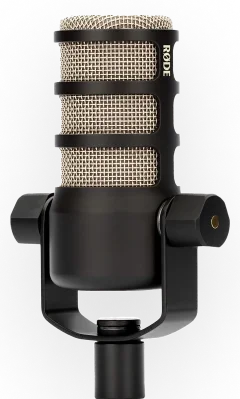This week: Amazon advertises podcasts offline, Twitter dissolves its Trust and Safety Council, Automakers phasing out AM radio, and a roundup of new research published this week.
Amazon pushing podcasts offline.
Manuela: This Monday Podnews covered Amazon Music’s new physical-space advertising campaign for their Best of 2022 podcast selections. The best-of collection has prominent placement on the front page of Amazon Music, and now the streamer is promoting it in England and France. From Editor James Cridland’s coverage:
“In London, ads will be appearing for the next two weeks promoting ten of the top podcasters. The company also carried audio ads within the Wondery network for the chosen podcasts, and produced social media assets.”
The ads in London primarily take the form of projected billboards on blank brick walls, along with a more traditional advertisement for the podcast +44 on a digital billboard in Waterloo station. In Paris, poster-sized digital placements for Amazon podcasts were spotted at Gare du Nord, the busiest train station in Europe.
Twitter Trust and Safety Council Dissolved
Arielle: Continuing the trend of a lot happening in a short amount of time at Twitter, the social media giant has dissolved its Trust and Safety Council. Originally booked to meet this Monday, members of the council told the Financial Times the meeting was canceled via email with only an hour’s notice. From Dave Lee’s reporting:
“The council was created in 2016 to solicit advice from dozens of experts and external organisations on how Twitter should tackle harassment, mental health issues and child exploitation, as well as suicide prevention. But in a note sent to members on Monday, the social media company said the council was no longer the “best structure” to gain outside insights on its policies.”
The dissolution of the council comes four days after three prominent members resigned, citing concerns over the leadership of new Twitter owner Elon Musk. From the trio’s group statement:
“We are announcing our resignation from Twitter’s Trust and Safety Council because it is clear from research evidence that, contrary to claims by Elon Musk, the safety and wellbeing of Twitter’s users are on the decline.”
One of the largest social media platforms has quickly become a problematic place for advertisers. Meanwhile, as data from the new Sounds Profitable study Safe and Sound attests, podcasting is uniquely positioned to welcome them to a brand-safe and suitable environment.
As the study’s data attests, podcasting’s opt-in nature creates an environment where programs that feature offensive or uncomfortable content largely have an audience of listeners who are fine with such content. And, more importantly, they tend to have audiences who are supportive of brands who sponsor that podcast. Listeners also tend to be forgiving for outlier examples of offensive content if they prefer podcasts that don’t discuss such things. From the study:
“Regular listeners to otherwise non-offensive shows will highly likely return to the podcast after a single episode featuring uncharacteristically offensive content.”
As advertisers begin to shy away from brand-unsafe places like Twitter, podcasting finds itself uniquely-suited to be a leader in brand safety and suitability.
Automakers sundown AM Radio in New Vehicles
Manuela: On December 1st, Senator Edward J Markey of New York sent a letter to the CEOs of several major automotive brands in the US, including Toyota, Volkswagen, and BMW. The letter strongly urges them to reconsider the growing trend of not offering AM radios in new electric vehicles.
Why is this a trend? Here’s James Gilboy’s explanation from a July article for The Drive:
“So are highly complex EVs incompatible with one of the oldest, simplest electronics? BMW and Volvo told me it was due to audio quality problems rooted in electromagnetic interference, of which EVs’ drivetrains produce a significant amount. Cars’ engines and other complex electronics have always made EM interference, but low-wattage static is relatively easy to shield against. It’s not as simple with EVs that may pull hundreds of watts from their batteries, generating far more interference, reducing audio quality to a level both BMW and Volvo told me they consider insufficient.”
Gilboy goes on to say he finds it difficult to take that explanation without a grain of salt, as US automakers circumvent the EM signal problem without issue. A common thread Gilboy notes is the manufacturers who have phased AM out of EVs tend to have strong roots in European markets.
“The frequency has largely been superseded by the DAB format, which is a more advanced form of radio broadcasting with better audio quality and choice of stations. AM radio stations and their listeners are all but gone in Europe, so European carmakers may not need to include technology that many of its customers can’t use.”
Understandably, the radio industry isn’t happy with this trend. Gilboy points to the Edison Research stat from 2018 citing 45% of radio listeners only listen to the radio in their car. Senator Markey’s letter ends with three questions asking automakers to give definitive answers as to whether they intend to fully stop offering AM and/or FM radio in future vehicles. If so, his followup questions press them to provide reasoning as to why. He provided a self-imposed deadline of December 22nd for answers to these questions.
Research Roundup: Podchaser, Podsights, Bumper.
Arielle: ‘tis the season for more data. Usually we round out the episode with a collection of articles called Quick Hits, but this week we’re switching it up. Hopefully you saved some room after reading Safe and Sound, as we’ve got three new podcasting research studies to share.
First up: Yesterday Podchaser published a new report titled What’s the Best Day to Publish a Podcast? The study uses six months of data from the top 50 thousand podcasts to segment data by genre.
For those wondering: the most popular day overall for a podcast to release is tied between Wednesday and Thursday, at 17.4%. Monday and Tuesday bring up second place with 17% share of episodes each. Saturday brings up the rear as least-popular, with only 7.1% of podcasts released.
Up next: The newest edition of the Podcast Advertising Benchmark Report from Podsights is here and contains good news. This newest report, compiled from nearly 11 billion impressions from 4.2 thousand campaigns, cites the average purchase conversion rate has increased 19% since last quarter.
Finally, a new blog post from Bumper seeks to answer the age-old question of whether or not to post a podcast during the last week of the year. Published this Tuesday, Bumper published their findings from a team-up with Simplecast that examined both podcast episode publication rates and listenership data from the final week of December in 2021.
Bumper started with a sample size of 988,235 podcast episodes from Apple Podcasts, all published in December 2021. They were then sorted by release date to form a graph depicting release cadence by day throughout the month. For comparison, Bumper did the same with data provided by the Simplecast team from the same period.
The two graphs reflect similar patterns: a visible dip in publication cadence during the final week of the year. The blog then goes on to discuss starts, stream, and play data from two podcasts that volunteered their data from the same time period, which examines if anyone is listening to podcasts during that final week of the year. From the blog:
“Your reaction to this data is a bit like a Rorschach test. You can see in it what you want: an excuse to skip a week, or an opportunity to try and stand out from the crowd during an otherwise quiet period.”


 "
"



